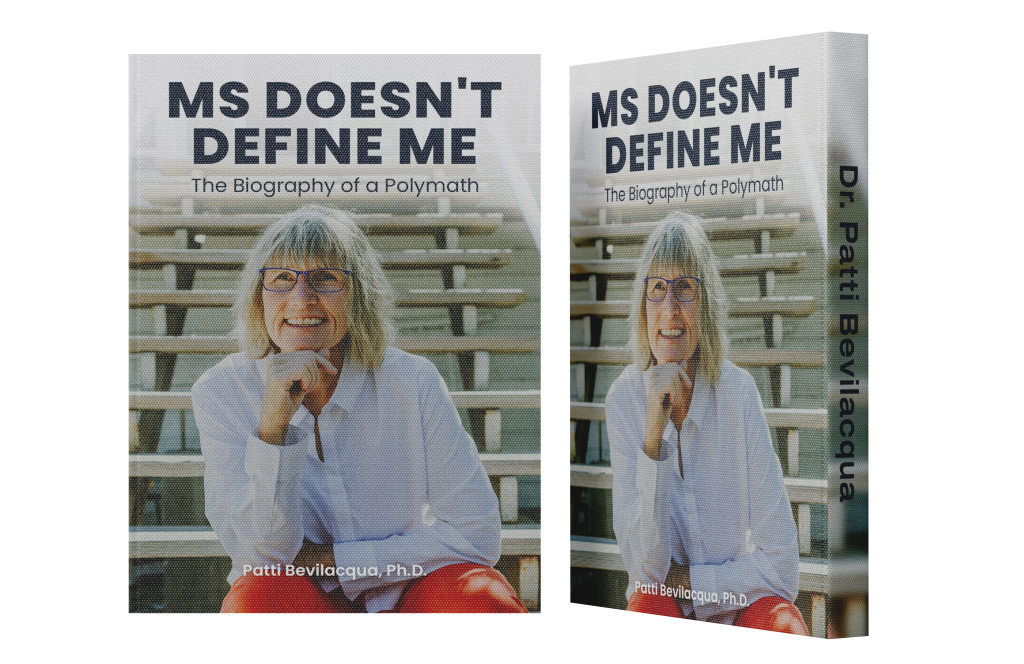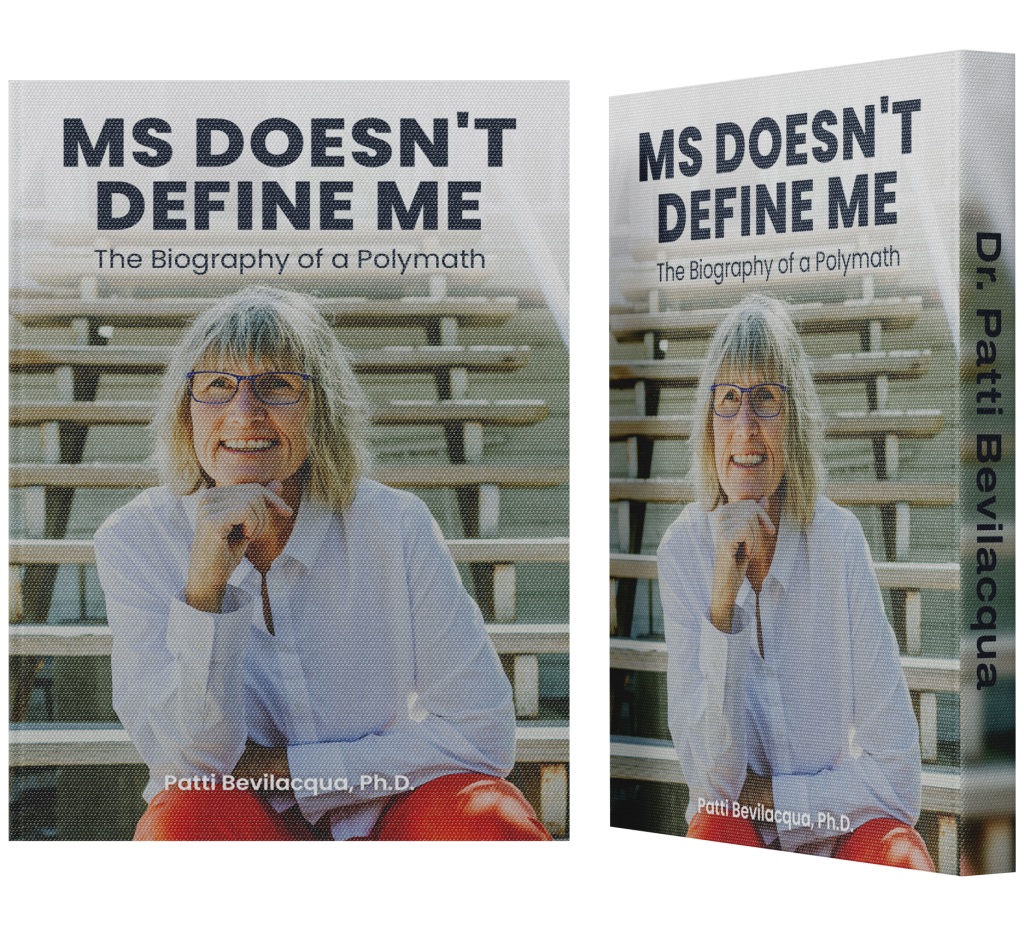There’s a moment in every great story where the hero, after facing trials and heartbreak, finds a new path—not one that returns them to who they were, but one that redefines who they are becoming. For Patti Bevilacqua, that turning point didn’t come with applause or a miracle cure. It came in quiet reflection, in moments of honesty, and in the decision to rebuild a life on her terms.
In Grief, Loss, and Letting Go, the second chapter of MS doesn’t define ME, we watched Patti grapple with the profound loss of her teaching career after being diagnosed with multiple sclerosis (MS). Now, in this next leg of her journey, we witness something just as powerful: acceptance. Not of defeat, but of possibility. A shift from “Why me?” to “What now?”
This blog explores how Patti didn’t just survive MS—she transformed through it.
Moving from Surviving to Living
After stepping away from her role as a physical education teacher, Patti was consumed by loss. Her depression ran deep, fed by the silence left behind when her purpose vanished. She no longer had the structure, the noise, the motion that once gave her life colour and direction. MS had taken not just her physical energy—but her sense of meaning.
But here’s where Patti’s story becomes extraordinary: she didn’t stay in that dark place.
Instead of denying the pain, she allowed herself to feel it. And then, slowly, she began to redefine what living could look like—not despite MS, but alongside it.
While her abilities had changed, her value had not. No longer just a teacher in a gym, she became a guide, a motivator, a force for good. And those things couldn’t be taken by illness. They were part of her essence.
Redefining Identity with Intention
What makes Patti’s transformation so moving is how intentional it is. Acceptance doesn’t come easily. It’s not a light switch—it’s a process.
First, she had to let go of the belief that her only value came from physical performance. That the measure of her worth was tied to a whistle, a stopwatch, or a classroom of active children. Then, she had to sit with the fear of starting over—and the possibility that her new life might look nothing like the one she imagined.
But slowly, she began to craft a new identity—not built on what she’d lost, but on what she still had to give.
Patti began advocating, sharing her story, and supporting others with chronic illness. And in doing so, she discovered something unexpected: her voice could be just as powerful as her movement had once been.
Strength Through Vulnerability
Patti’s greatest strength, as revealed in this phase of her story, is not her ability to bounce back it’s her willingness to be vulnerable. She admitted she was hurting, talked openly about depression, and accepted help. And to allow herself to become a beginner again.
This vulnerability became the very foundation of her resilience. It allowed her to connect with others in deeper, more authentic ways. No longer the woman who had all the answers, she became the woman who asked better questions—the kind that opens doors and hearts.
In her journey, we’re reminded that vulnerability isn’t weakness. It’s the birthplace of strength. And it’s through our willingness to be seen, even in pain, that true healing begins.
A New Kind of Impact
Patti once led students through fitness drills and movement games. Today, she leads by example in a different arena: the human experience.
Her influence now stretches beyond the classroom. She’s become a beacon for anyone navigating chronic illness, job loss, identity change, or emotional transformation.
By sharing her story publicly, Patti creates space for others to speak their truths. To admit they’re struggling. To find hope not in a perfect recovery—but in the courage to rebuild, one step at a time.
In this way, Patti is still teaching and still guiding and still inspiring. But now, her lessons aren’t about physical endurance—they’re about emotional courage, spiritual depth, and the art of starting again.
The Power of Acceptance
One of the most profound elements of Patti’s story is her acceptance—not of MS as something she wanted, but as something she had the power to live with meaningfully.
She reclaims agency by choosing how to respond. And in that choice, she shows all of us that identity doesn’t disappear with diagnosis. It evolves.
She accepts that life looks different now. But she also discovers that different doesn’t mean worse—it just means new. And with time, “new” becomes beautiful.
Why Patti’s Story Matters Now
We live in a world where people are constantly pushed to “get over it,” to “stay strong,” and to “bounce back” without acknowledging the grief that comes with real change. Patti’s story offers a counter-narrative. One that says: Feel it. Name it. Then, build something new from it.
For anyone struggling to find themselves after a personal loss—whether from illness, career disruption, or emotional upheaval—Patti’s journey is a guidebook for healing.
It doesn’t offer shortcuts. It offers truth. And that makes it incredibly powerful.


